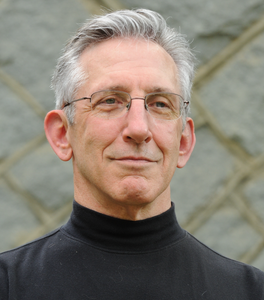 Here is Part 5 – the concluding part – of a new, short series on the Mandukya Upanishad, from James Swartz. This post addresses the nature of turIya and contains a verse translation of the Upanishad.
Here is Part 5 – the concluding part – of a new, short series on the Mandukya Upanishad, from James Swartz. This post addresses the nature of turIya and contains a verse translation of the Upanishad.
Monthly Archives: April 2013
Review of article on Shankara – part 3
Ramakrishnan Balasubrahmanian (RB): “Now the error in calling avidy¯a as something epistemic should be obvious. The following extract, from [SSS], is clearly putting the philosophical cart before the horse:
‘Avidy¯a is subjective and has been explained by ´ Sa ˙ nkara as the natural tendency of the mind to superimpose the self and the not-self oneach other.’
When the conception of j¯ıva itself is due to avidy¯a, how can avidy¯a be the ‘natural tendency of the mind to superimpose the self and not-self’?” (*)
Our reply: To repeat, it is not just avidya as a general concept, that is, ignorance, but avidya-adhyasa, which is a technical (double) concept whose consequences are far-reaching in empirical life, being responsible for all divisions and superimpositions. No reason why this should be considered a circular argument. Continue reading
Q.343 – Meaning of Ishopanishad mantra
Q : The second line in the first Shloka of Ishopanishad begins with ” Tena tyaktena Bhunjeeta”. The literal meaning appears to be ” therefore, enjoy with a sense of tyaga or renunciation (as everything created in this world is permeated by Ishwara) but Adi Shankaracharya has interpreted these words to mean ” protect ourselves”. Is there a satisfactory explanation for this interpretation?
Also, the second word of first verse of Ishopanishad: is it vasam (is full) or vasyam (should be considered full). Shankara says vasyam. Vasam appears more logical to me.
A (Ramesam): In order to fully appreciate and admire the beauty and profundity hidden behind the simplicity of a cryptic statement, one ought to know the background and the context against which that expression gets developed. It is as much true when we talk of an equation such as E = mc^2 or a routine proverb like ‘Still waters run deep.’ Continue reading
The Dream Problem – Part 12
 Part 12 of the New Book Serialization!
Part 12 of the New Book Serialization!
The Dreamer asks Vasishtha about the usefulness of mind control and samAdhi and the value of yoga siddhi-s.
Vision Of Truth (sad darshanam) – Part 9
So far, we have seen that ‘I’ thought = ahankAra= ego = sentient mind = mind with reflected consciousness. The ‘I’ thought (ahankAra) knows itself (ahankAra). It is always present in all experiences as ‘I’. ‘I thought’ remains the same. It is experienced as ‘I am’ ‘I am’, for e.g. “‘I’ know the book”, “‘I’ know the laptop”, “’I am fat” etc.
The ‘This-thoughts’ are thoughts corresponding to objects. ‘This-thought’ is variable, based on the object perceived.
Since these three are unreal, they are not eternal. They have a rising time and a disappearing time.
In the previous verse we saw that the world is dependent on the mind. This verse further elaborates it by stating the exact mechanism of the mind.
The world rises and disappears along with the ego; meaning the ‘This-thought’ depends on the ‘I-thought’. In other words, only when there is the ‘I-thought’ can then there be the ‘this-thought’. When the ‘I-thought’ is resolved, the ‘This-thought’ also resolves.
Hence, the appearance and disappearance of the world depends on the ‘I’ thought (ego). This is explained in the first two lines of the verse. This can be understood by considering the daily experience of sleep. In deep sleep, the mind (ego) is resolved. The ahankAra is temporarily not here. As soon as one gets ip, the mind is activated, the ego is ignited in the form of ‘I’. the ‘This-thoughts’ follow after this. The ‘This-thought’ does not directly come. The ‘I-thought’ is invoked first. The activities in the world are begun after this. Again, as soon as one goes to sleep, the mind is resolved and the the ego is not there temporarily. The ego gone, the world also does not exist. Hence, the world (this-thought) depends on the ego (‘I-thought’).
What then is the real ‘I’? We know that ‘I-Thought’ is not real, since it depends on consciousness. The mind has the ‘I-thought’ by the blessing of the consciousness otherwise it is inert matter. The origin of the ‘I-thought’ is in the mind , which is unreal. Hence, ‘I-thought’ is unreal, its origin being unreal and it being the kind which rises and sets.
The third line of the verse says that the real thing (self) is the substratum for the birth and death of the world (‘This-thought’) and the ego (‘I-thought’). The mind rises and resolves int eh basis, the self. Hence the world and ego finally depend on the Atma. everything rises, in the self, is sustained in the self and resolves in the self. The ego, the ‘I’ thought, the ‘this’ thought and the objects are all unreal. They are mere words with no substance, since, the basis is the self and they have no existence apart from the self. The clay pot, the clay saucer, the clay plate, the clay spoon are nothing but clay. The forms are incidental. There is nothing but clay. So also, the mind and world are mere appearances. The truth is the self. The consciousness in which all these shine alone is the truth.
The self is further explained as one, whole which has not birth and decay. The real thing has to be one since otherwise it would be finite. It has to be infinite and hence the whole. Being so, it has to be birth-less and decay-less meaning changeless. If it changes, it cannot be eternal.
The substratum on which the world, mind and its functions rise and set is the self. All except the substratum are unreal. The only truth is the basis behind the play.
The important lesson learnt in this verse is that not only should the world be negated as unreal but even the ego has to be included in the same category.
Logical enquiry into ‘Who I am’ (1/4)
 At some time or other in every person’s life the question of identity arises in some form or other. For most people, the answer seems pretty obvious: I am a unique human being, a man/woman, in this body, with these parents, these siblings, and these ideas. I am defined by my wealth, my social class, my education, my tastes, my network of contacts, my race. I am shaped by my biology, my physiology, my psychology. Anything beyond this is ‘philosophy’, and one thing I am not is a philosopher!
At some time or other in every person’s life the question of identity arises in some form or other. For most people, the answer seems pretty obvious: I am a unique human being, a man/woman, in this body, with these parents, these siblings, and these ideas. I am defined by my wealth, my social class, my education, my tastes, my network of contacts, my race. I am shaped by my biology, my physiology, my psychology. Anything beyond this is ‘philosophy’, and one thing I am not is a philosopher!
If, however, people knew the life-changing value in finding the true answer to the question, ‘Who am I?’ they might be prepared to dig a bit deeper for that truth. Vedānta gives us a very good reason to pursue the question. It says that because we do not know the truth of who we are, we take ourselves to be an amalgam of the body and mind (thus pretty much confirming the majority view). The inevitable consequence of identifying with something that is as changeable, limited and vulnerable as the body and mind, is that ‘I’ is also taken to be changeable, limited and vulnerable. And it consumes a whole life of sweat and slog in trying to build up adequate self-protection. Continue reading
Eka jIva VAda – I Am Alone: Part III
Our esteemed colleagues Suka and Martin made certain important observations on the earlier Posts of mine on this subject. So I felt it may be better to respond to the points raised by them without any further delay before resuming my presentation with regard to Eka jIva vAda.
A: About the similarity between Wakeful and Dream Worlds:
Suka pointed out to the three distinct orders of reality distinguishable from the way we experience them and opined that dream and awake world cannot be treated at par. He said that a dream world was a ‘bhrama‘ whereas the awake world was ‘mithya.’
Q.342 – Teachings of Nisargadatta and Ramana
Q: Is there a difference in the teachings of Ramana Maharshi and Nisargadatta Maharaj?
A (Dennis): This is too general a question, really. The short answer is that the bottom-line message of any teacher of Advaita must be the same, obviously. But the methodology depends upon the teacher lineage. Nisargadatta did have a lineage, although his own style developed somewhat! And Ramana did not have a lineage at all. The absence of a lineage means that what is said lacks rigor and is subject to differing interpretations etc. This is why the recommendation is always to try to find a qualified, traditional teacher.
Q: I do realize that my question was too general and could not be dealt with in a short answer. What I had in my mind was with regard to their approaches to meditation/ self enquiry or the “path” recommended by them. In self enquiry Ramana stated that while enquiring into “who am I?” the I that is enquired into is the individual or the ego and not the Self. According to him, focusing on the ego or I would make one realize that it is a phantom and thus lead one to the Self. Nisargadatta, on the other hand, seems to suggest that one should focus directly on I am, which is the same as the Self. In this sense, I thought there was some difference in their teaching. Continue reading
Freedom – Love – Happiness
The Book of Undoing
Details of a new book by Fred Davis (Awakening Clarity website)
This book has arisen from Direct Pointing sessions that I’ve had with clients around the world. These deceptively simple inquiries and dialogues work. Men and women who have studied Nonduality for decades, both in and out of structured traditions, without experiencing even the first authentic glimpse of themselves have come to recognize their true nature during these talks. Some of them have been glimpses, and others remain ongoing. Still others, who were confounded by oscillation when we began to talk, have moved from there into stable Nondual awareness. And of course there are a few people who’ve reported no change at all; such is the way of it. Continue reading

